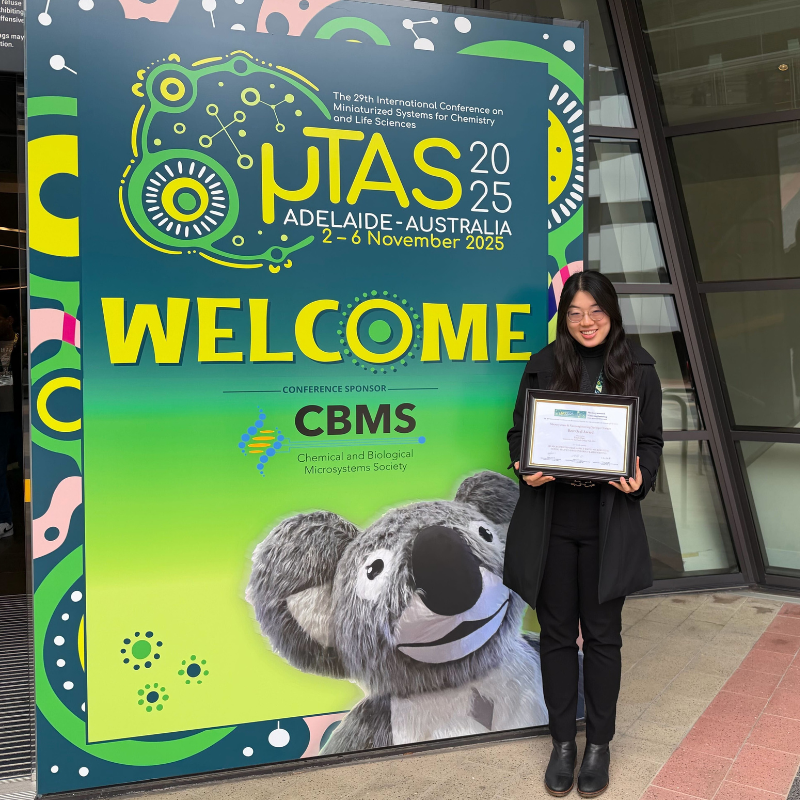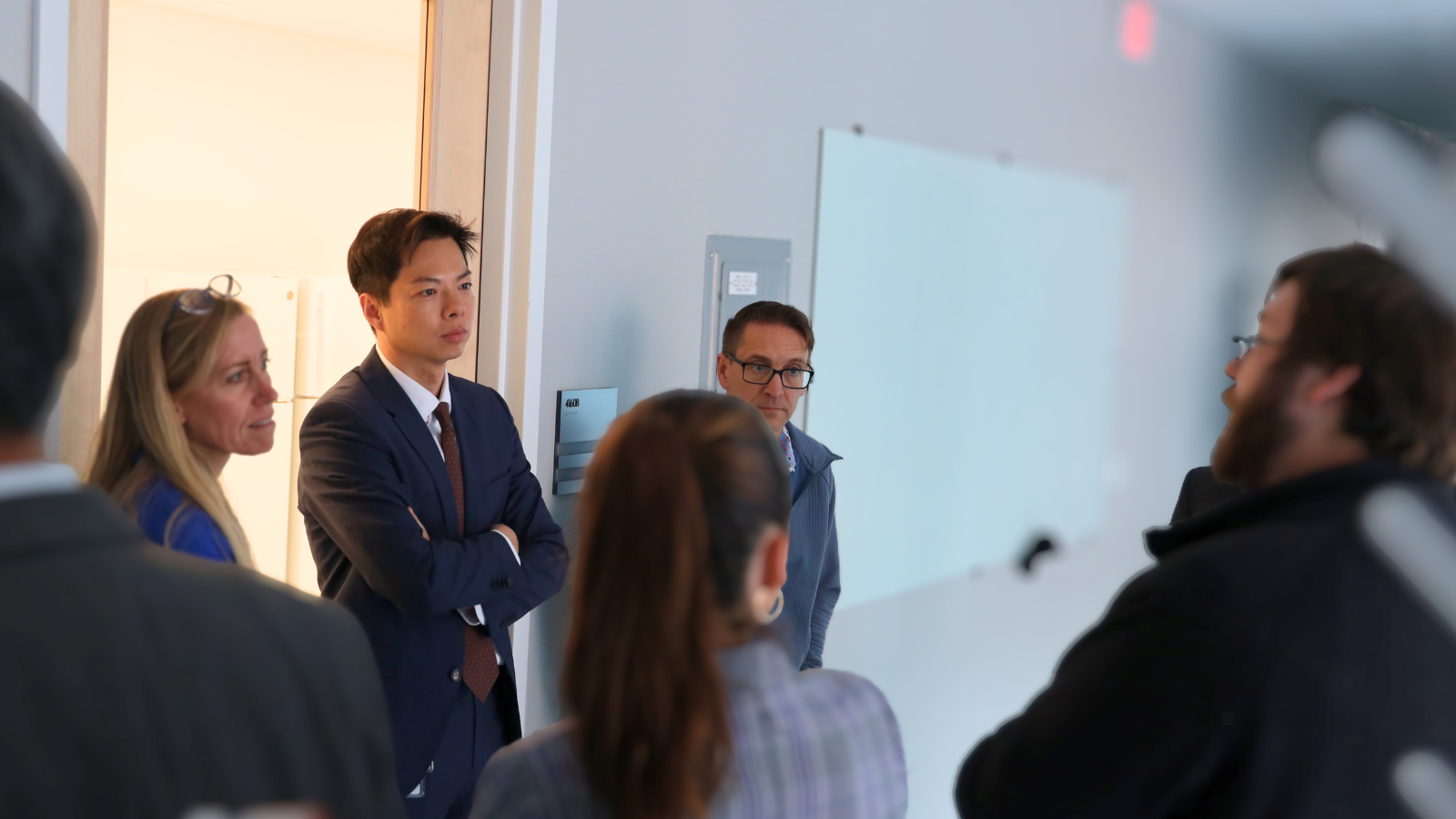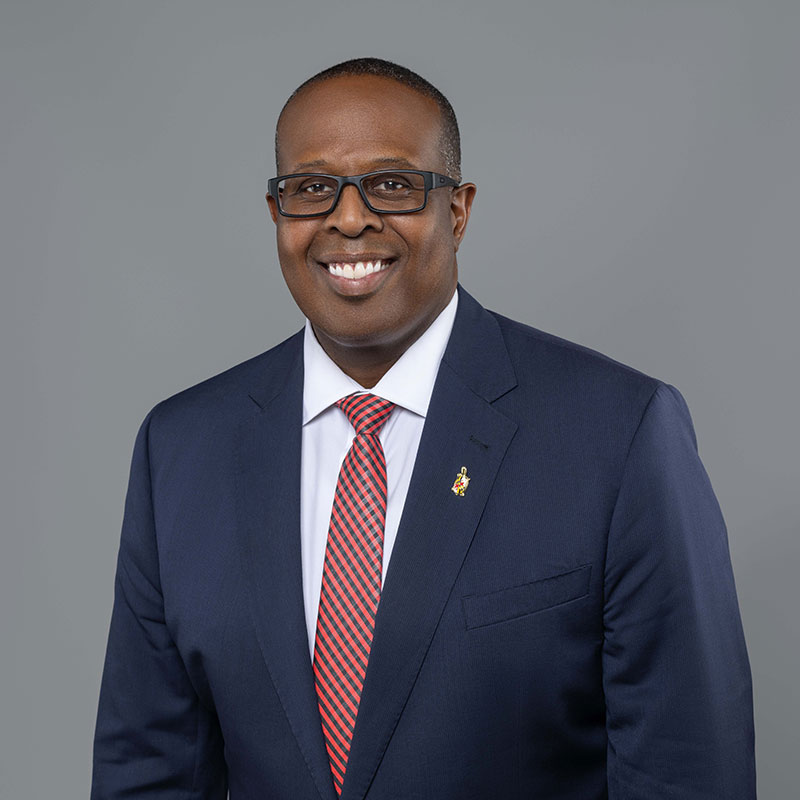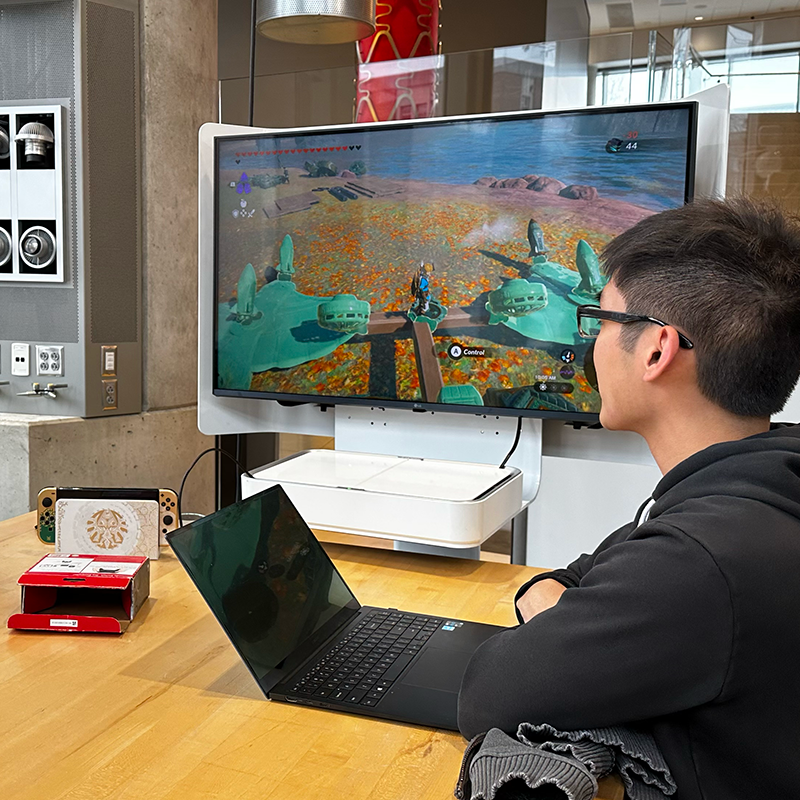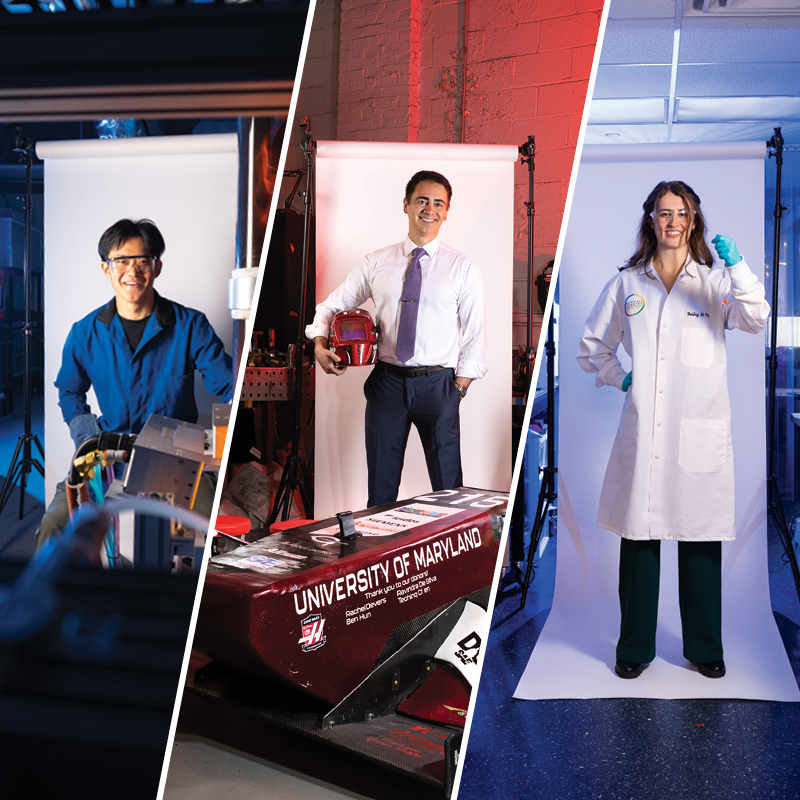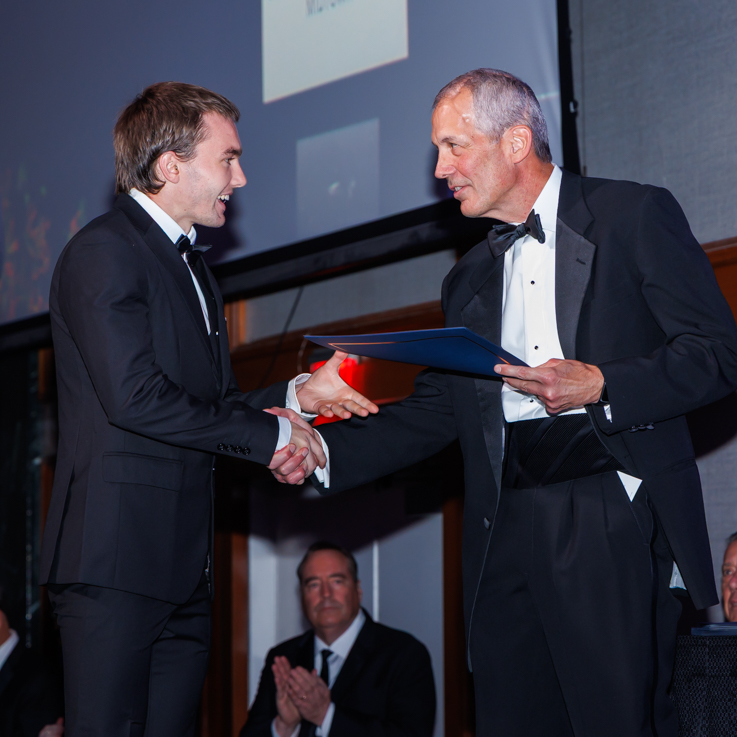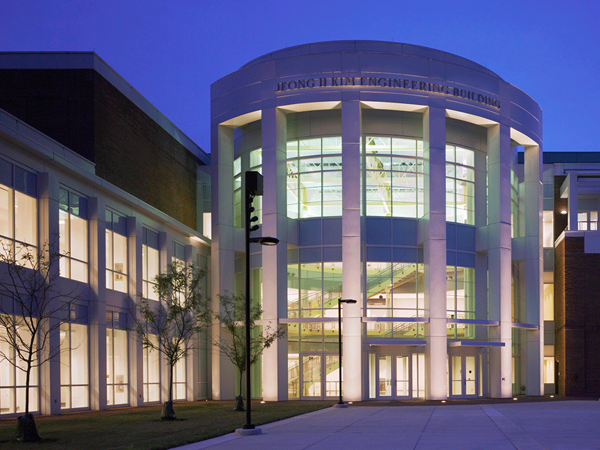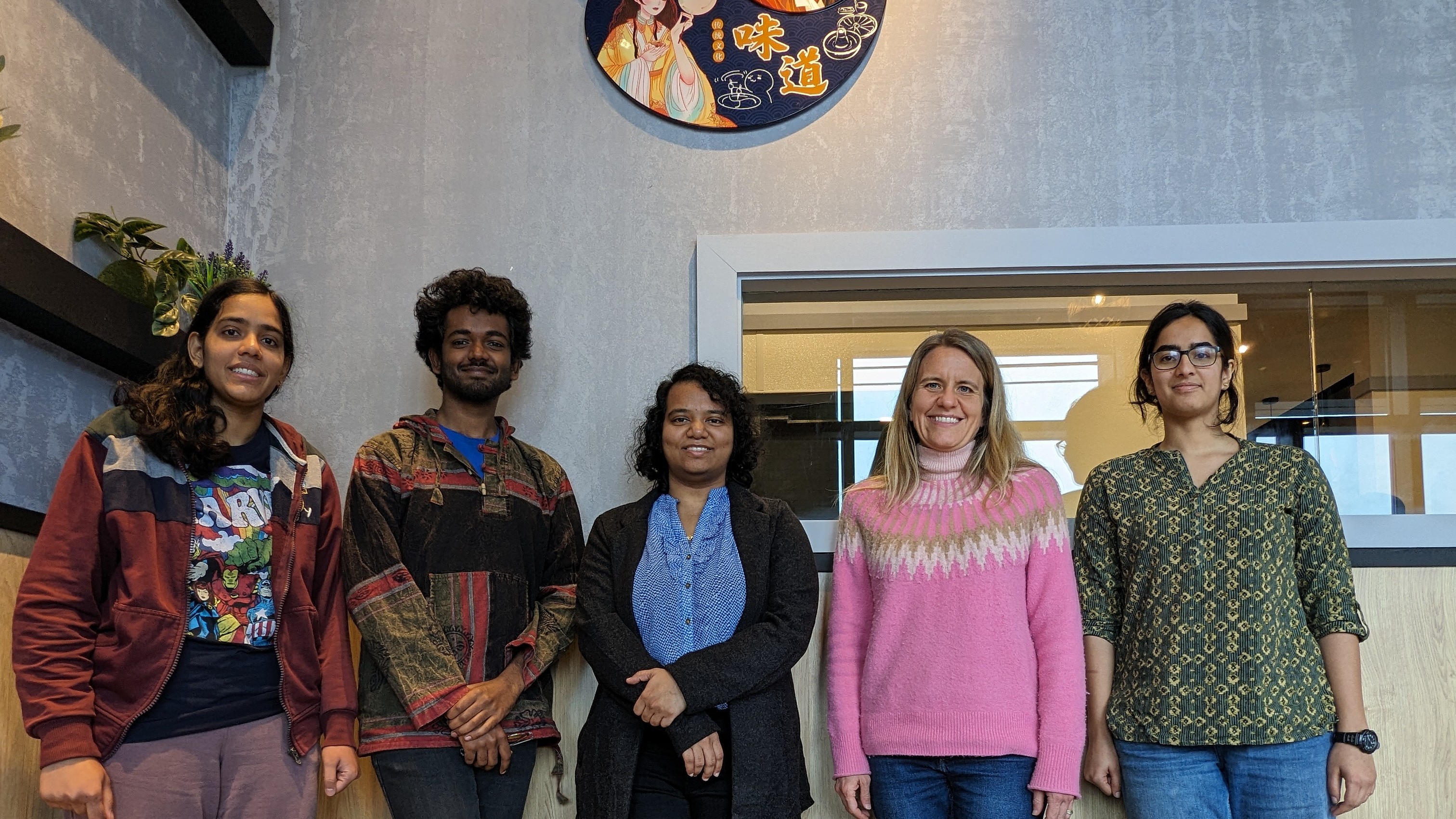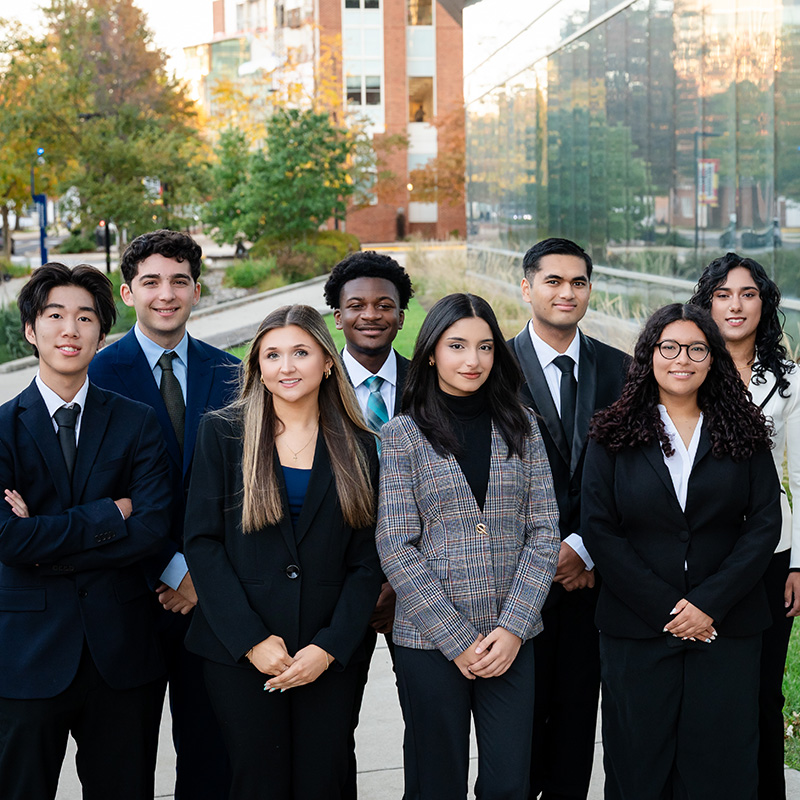News Story
Professor James G. Quintiere, a Legend in Fire Safety Science and Engineering, Dies at Age 84
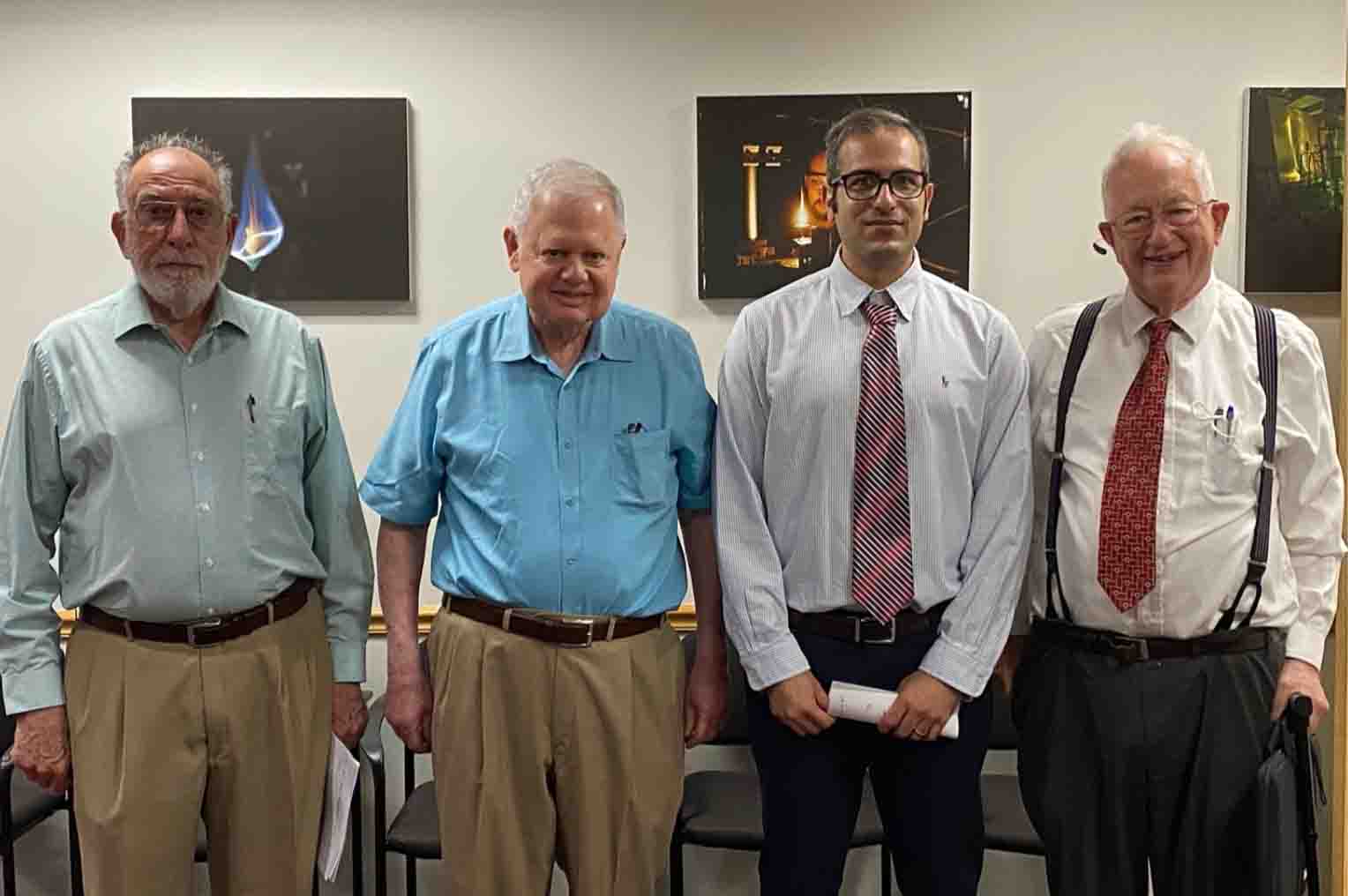
A picture taken in the FPE Department on June 7, 2022, the day of the oral examination of Parham Dehghani’s PhD degree. From left to right: Jim Quintiere, Howard Baum, Parham Dehghani, John de Ris.
It is with great sadness that we share the news of the passing of our former colleague, close friend and mentor, Professor Emeritus James (Jim) Gennaro Quintiere (05/05/1940-23/12/2024).
Jim received a Ph.D. degree in Mechanical Engineering from New York University in 1970 with a thesis entitled “An Analysis of Natural Convection between Finite Vertical Parallel Plates.” During his Ph.D., Jim already showed the traits that have come to characterize many of his scientific contributions: using approximate analytical methods to solve complex mathematical problems of great practical importance. His PhD was sponsored by the National Aeronautics and Space Administration (NASA) and was the beginning of a long association with that agency. After completing his PhD, Jim started his career in fire engineering at the Center for Fire Research of the National Bureau of Standards (NBS; in 1988, NBS became the National Institute of Standards and Technology, NIST). Here he rose through the ranks to become Group Leader and then Division Chief. He led NBS through what became one of the most productive periods for fire research. From defining a theoretical framework for material flammability (that led to ASTM-E-1321) to developing practical criteria for flashover through the McCaffrey, Quintiere & Harkleroad (MQH) correlation, Jim not only touched on almost every subject pertaining to fire safety during his time but also was at the center of an impressive research activity that found his name associated to many of the people who are considered today as the forefathers of fire and combustion science. In 1990, Jim joined the Faculty of the Department of Fire Protection Engineering at the University of Maryland (UMD) with a mission to bring fire science to the growing teaching and research activities of the department. He became John L. Bryan Professor in 2000 and retired with the title of Professor Emeritus in 2012. After his retirement from the University of Maryland, Jim remained active in fire research through his close collaboration with the fire research team of the Federal Aviation Administration (FAA) Technical Center located near Atlantic City, New Jersey, and with his colleagues at UMD and NASA. During the past few years, Jim’s enduring interest in fire research was further demonstrated by his participation in a NASA-sponsored project on a “burning emulator,” a project that he started in collaboration with his colleagues at UMD, and that led to a series of experiments conducted in the International Space Station (ISS).
Jim has an outstanding record as a scientist, as a teacher and as an engineer. Throughout his career, Jim has been a strong advocate for building the discipline and the practice of fire safety engineering on renewed foundations set by fire science. He is well known for pioneering ground-breaking experimental work aimed at revealing fire phenomenology as well as for developing theoretical analysis aimed at providing a mathematical/physical framework to understand and predict fire dynamics. He is also well known for translating the results of his research work into methods and tools available for practicing engineers; he truly had a unique talent to connect the fundamental concepts displayed in fire problems with their practical application. Jim has authored or co-authored most of the classical textbooks used worldwide in fire safety engineering and fire investigation programs: “Principles of Fire Behavior” (1st edition published in 1997, 2nd edition published in 2016); “Enclosure Fire Dynamics” (co-authored with Bjorn Karlsson, 1st edition published in 1999, 2nd edition published in 2022); and “Fundamentals of Fire Phenomena” (published in 2006).
Jim was also one of the founding members of the International Association for Fire Safety Science (IAFSS), which organized the 1st International Symposium on Fire Safety Science in 1985. Jim was passionate about the need to establish a fire science community in support of fire engineering applications, the need to provide a home for this new scientific community at the international level, around the IAFSS and around shared publications and meetings, and the need to direct the IAFSS community to provide the relevant technical foundations for the practice of fire engineering. Jim delivered the Howard W. Emmons Invited Plenary Lecture, the highest award of the association, in 1986, and acted as Chairman of the IAFSS from 1991 to 1997.
Jim’s many achievements have been repeatedly celebrated by the fire research community. He became a Fellow of the Society of Fire Protection Engineers (SFPE) in 1999 and a Fellow of the American Society of Mechanical Engineers (ASME) in 2004; he was awarded the Bronze and Silver Medals of the U.S. Department of Commerce in 1976 and in 1982, respectively, the Kunio Kawagoe Gold Medal from the IAFSS in 2011, the Sjölin Award from the International FORUM of Fire Research Directors in 2002 and again in 2023 with the FAA Team, the Arthur B. Guise Medal from SFPE in 2006, and the Rasbash Lecture Medal from the Institution of Fire Engineers (IFE) in 2008.
Jim’s understanding of fire reached a wider audience through his involvement with the fire investigation community. He not only participated in several high-profile forensic investigations related to fire, including the investigation of the Branch Davidian fire that occurred in 1993 near Waco, Texas, and the investigation of the collapse of the World Trade Center that occurred on 9/11 2001 in New York City, but also developed educational programs and was a regular speaker at many events globally.
Jim spent his final years at the shore in his home state of New Jersey, where he joined the Durning String Band as a skilled accordionist and proudly marched with them at special events and each year in the Mummers New Years Day parade in Philadelphia. When Jim was not playing accordion with the Mummers or at local bars and restaurants, he conducted research for the Department of Transportation at the FAA Technical Center, socialized with friends and colleagues around the globe, developed and tested a handicapping system for horse racing, read voraciously, lectured at FAA intermittently, played golf occasionally, hosted lavish dinner parties (Jim always enjoyed debating with people on issues great and small), and took long walks on the beach at his ocean-front condominium in Margate.
The fire safety science and engineering community has lost one of its most enthusiastic, prominent and impactful members. The legacy of Jim Quintiere’s professional achievements, humanity, humor and friendship will stay with us forever.
- Howard R. Baum (retired, formerly at the National Institute of Standards and Technology, Gaithersburg MD, USA)
- Michael A. Delichatsios (Northeastern University, Boston MA, USA, and University of Science and Technology of China, Hefei, China)
- John L. de Ris (retired, formerly at FM Global, Norwood MA)
- A. Carlos Fernandez-Pello (University of California Berkeley, Berkeley CA, USA)
- Marc Janssens (Southwest Research Institute, San Antonio TX)
- Richard E. Lyon (Federal Aviation Administration, Atlantic City International Airport NJ, USA)
- Vladimir Molkov (Ulster University, Northern Ireland, United Kingdom)
- Arnaud Trouvé (University of Maryland, College Park MD, USA)
Published January 8, 2025
